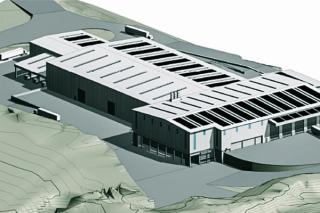
Asbestos in Soil Management
- Client Name
- Confidential
- Location
- Porirua, Wellington, New Zealand

Challenge
The client proposed redeveloping a site for a new commercial/light industrial trade park occupying approximately four hectares of land near Porirua, Wellington. However, as the site was on a former auto-motive wreckers’ yard, the land needed to be investigated to determine whether there had been any contamination.
Solution
Our Environmental Services team was engaged to undertake a Detailed Site Investigation (DSI) of the site. The initial DSI identified that the site had a long history of use as an automotive wreckers/metals recycling yard. Further intrusive investigations identified the presence of buried anthropogenic waste in the form of car parts, car bodies and tyres. 4Sight (now SLR) carried out soil sampling, which indicated the low-level presence of several contaminants of concern in soils across the site, including petroleum hydrocarbons and asbestos.
The presence of asbestos in shallow soils at the site was the primary driver for remediation, as while concentrations were at a low-level, they did exceed the adopted human health assessment criteria, and were widespread across much of the site. Excavation and removal of all asbestos impacted soils for off-site disposal was not considered a practical or sustainable method of remediation, nor would it enable better environmental outcomes. Off-site disposal of low-level asbestos impacted soil was determined via the Remediation Action Plan (RAP) to potentially exacerbate risks to human health through unnecessary soil disturbance.
The preferred management approach agreed with the client, which was accepted by appropriate regulatory agencies, was to manage the low-level impacted asbestos in soil in situ, following the removal of any visible asbestos cement material (ACM) fragments from surface soils. The management methodology included covering the surface of the site in non-woven geofabric and placing site-sourced clean fill cut soil over to build a series of platforms for future building.
Impact
Subsequent soil validation works confirmed appropriate encapsulation of low-level asbestos impacted soils, such that risk to human health in light of the proposed development was considered highly unlikely, provided encapsulated soils remained undisturbed. An ongoing site management plan was prepared to detail appropriate management requirements should encapsulated soils be disturbed (for example future sub-surface maintenance works).
The outcome of this project was positive for all stakeholders: soil disturbance and off-site disposal was minimised, human health and environmental risks were managed appropriately, and the selected solution provided development opportunities for the client.

